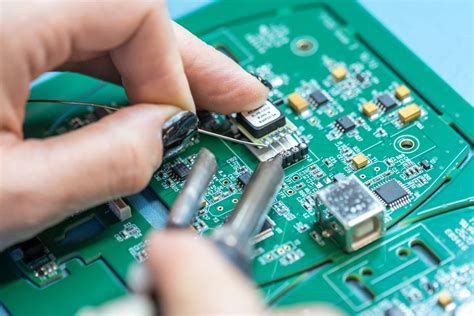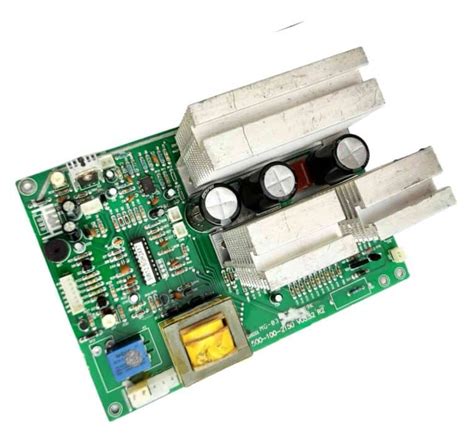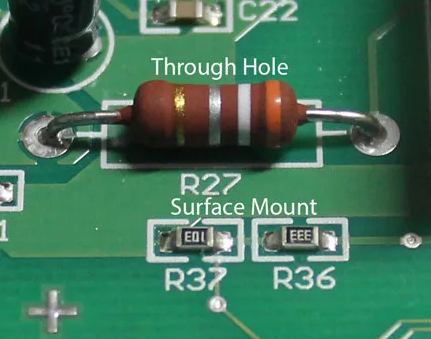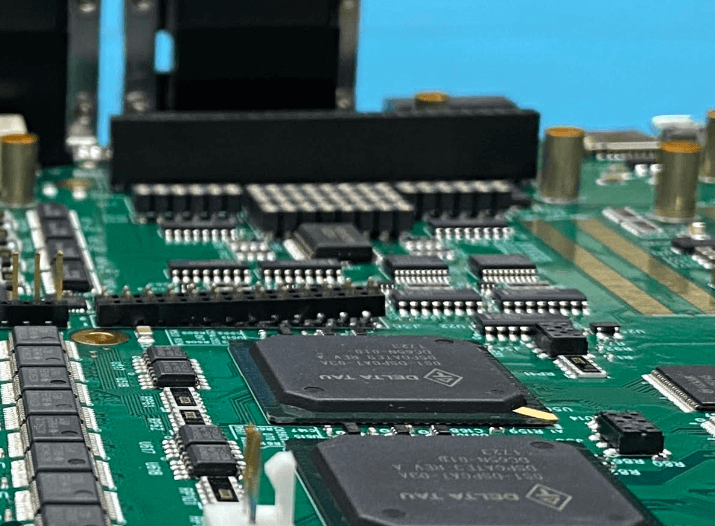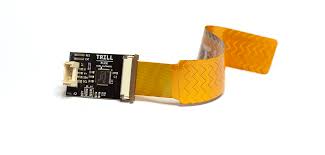High speed routing guidelines
Understanding The Basics Of High-Speed Routing
High-speed routing is a critical component in modern network infrastructure, enabling the rapid transmission of data across vast distances.
As the demand for faster internet speeds and more reliable connections continues to grow, understanding the basics of high-speed routing becomes increasingly important for network engineers and IT professionals.
At its core, high-speed routing involves the efficient management of data packets as they traverse complex networks, ensuring that information reaches its destination with minimal delay and maximum reliability.
To begin with, it is essential to comprehend the fundamental principles that underpin high-speed routing.
One of the key concepts is the use of routing protocols, which are sets of rules that determine the best path for data to travel through a network. These protocols, such as OSPF (Open Shortest Path First) and BGP (Border Gateway Protocol), play a crucial role in optimizing the flow of data by dynamically adjusting routes based on current network conditions.
By continuously analyzing factors such as network congestion and link failures, routing protocols help maintain efficient data transmission even in the face of changing circumstances.
Moreover, the architecture of high-speed routers is designed to handle large volumes of data at rapid speeds.
These devices are equipped with powerful processors and high-capacity memory to process and store routing information quickly. Additionally, they often incorporate specialized hardware, such as ASICs (Application-Specific Integrated Circuits), to accelerate packet forwarding and reduce latency. This combination of advanced hardware and intelligent software enables high-speed routers to manage the complex demands of modern networks effectively.
In addition to hardware considerations, the configuration of high-speed routers is equally important.
Proper configuration ensures that routers operate optimally and can adapt to the dynamic nature of network traffic. This involves setting appropriate parameters for routing protocols, implementing quality of service (QoS) policies to prioritize critical data, and configuring security measures to protect against potential threats. By carefully tuning these settings, network administrators can enhance the performance and reliability of high-speed routing systems.
Furthermore, the integration of emerging technologies is shaping the future of high-speed routing.
For instance, the adoption of software-defined networking (SDN) allows for more flexible and programmable network management. SDN decouples the control plane from the data plane, enabling centralized control over routing decisions and facilitating rapid adjustments to network configurations. This approach not only improves the efficiency of high-speed routing but also simplifies the management of complex networks.
Another significant development is the implementation of IPv6, the latest version of the Internet Protocol.
With its vastly expanded address space, IPv6 supports the growing number of devices connected to the internet and enhances routing efficiency. The transition from IPv4 to IPv6 is a crucial step in accommodating the increasing demand for high-speed data transmission and ensuring the scalability of future networks.
In conclusion, understanding the basics of high-speed routing involves a comprehensive grasp of routing protocols, router architecture, configuration practices, and emerging technologies.
As networks continue to evolve and expand, the ability to manage data efficiently and securely becomes paramount. By staying informed about the latest advancements and best practices in high-speed routing, network professionals can ensure that their systems are equipped to meet the challenges of the digital age. Through continuous learning and adaptation, the potential of high-speed routing can be fully realized, paving the way for faster and more reliable communication networks.
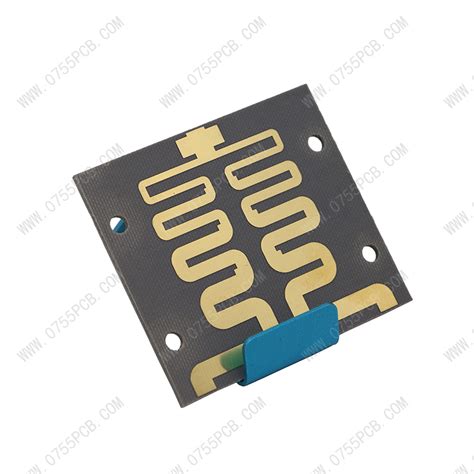
Best Practices For Designing High-Speed PCB Layouts
Designing high-speed printed circuit board (PCB) layouts is a critical task that requires meticulous attention to detail and a comprehensive understanding of electromagnetic principles.
As electronic devices become increasingly sophisticated, the demand for high-speed data transmission has surged, necessitating the development of effective routing guidelines to ensure signal integrity and optimal performance. To achieve this, designers must adhere to a set of best practices that address the unique challenges posed by high-speed circuits.
To begin with, one of the fundamental considerations in high-speed PCB design is the management of signal integrity.
Signal integrity issues, such as reflections, crosstalk, and electromagnetic interference, can significantly degrade the performance of high-speed circuits. Therefore, it is essential to maintain controlled impedance throughout the signal paths. This can be achieved by carefully selecting the trace width and spacing, as well as the dielectric material of the PCB. By ensuring that the impedance is consistent, designers can minimize signal reflections and maintain the integrity of the transmitted signals.
In addition to impedance control, the layout of the power distribution network (PDN) is another critical aspect of high-speed PCB design.
A well-designed PDN ensures that power is delivered efficiently to all components, minimizing voltage fluctuations and noise. To achieve this, designers should use a multi-layer PCB with dedicated power and ground planes. This configuration not only reduces the inductance of the power delivery path but also provides a low-impedance return path for high-frequency signals, thereby reducing electromagnetic interference.
Moreover, the placement of components plays a pivotal role in high-speed PCB layouts.
Components should be strategically placed to minimize the length of high-speed signal paths, thereby reducing the potential for signal degradation. It is advisable to place components that communicate frequently in close proximity to each other. Additionally, critical components such as oscillators and clock generators should be isolated from noisy circuits to prevent jitter and timing errors.
Transitioning to the topic of routing, it is imperative to follow specific guidelines to ensure optimal performance.
Differential pairs, commonly used in high-speed designs, should be routed symmetrically to maintain signal integrity. The traces should be of equal length to prevent skew, and any bends should be gentle to avoid impedance discontinuities.
Furthermore, it is crucial to avoid routing high-speed signals over split planes or across gaps in the ground plane, as this can lead to increased electromagnetic interference and signal integrity issues.
Another important consideration is the use of vias in high-speed PCB designs.
While vias are necessary for connecting different layers of a PCB, they introduce parasitic inductance and capacitance, which can adversely affect signal integrity. To mitigate these effects, designers should minimize the number of vias used in high-speed signal paths and opt for blind or buried vias when possible. Additionally, it is beneficial to use back-drilling techniques to remove unused via stubs, further reducing signal degradation.
In conclusion, designing high-speed PCB layouts requires a comprehensive approach that addresses various aspects of signal integrity, power distribution, component placement, and routing. By adhering to these best practices, designers can ensure that their high-speed circuits perform reliably and efficiently. As technology continues to advance, the importance of meticulous PCB design will only grow, underscoring the need for designers to stay informed about the latest developments and techniques in the field.
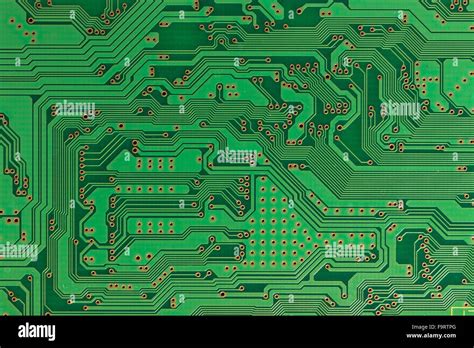
Overcoming Common Challenges In High-Speed Routing
In the realm of high-speed routing, engineers and designers frequently encounter a myriad of challenges that can impede the performance and reliability of electronic systems. As technology continues to advance, the demand for faster data transmission rates has intensified, necessitating the development of robust strategies to overcome these obstacles.
One of the primary challenges in high-speed routing is signal integrity, which can be compromised by factors such as crosstalk, impedance mismatches, and electromagnetic interference. To address these issues, it is essential to implement meticulous design practices that ensure the integrity of signals as they traverse complex circuit pathways.
A fundamental aspect of maintaining signal integrity is the careful management of trace impedance.
Impedance mismatches can lead to signal reflections, which degrade the quality of the transmitted signal. To mitigate this, designers must ensure that the impedance of traces is consistent with the impedance of the components they connect. This can be achieved through precise control of trace width, spacing, and the dielectric properties of the substrate material. Additionally, employing differential signaling techniques can further enhance signal integrity by reducing susceptibility to external noise and minimizing crosstalk between adjacent traces.
Crosstalk, another prevalent challenge in high-speed routing, occurs when signals in one trace induce unwanted currents in neighboring traces.
This phenomenon can be particularly problematic in densely packed circuit boards where space constraints limit the separation between traces. To combat crosstalk, designers can utilize techniques such as increasing the spacing between traces, implementing ground planes to provide shielding, and using guard traces to isolate critical signal paths. Moreover, careful layer stack-up design can play a crucial role in minimizing crosstalk by strategically placing signal and ground layers to optimize electromagnetic compatibility.
Electromagnetic interference (EMI) poses yet another challenge in high-speed routing, as it can disrupt the operation of electronic systems by introducing unwanted noise.
To mitigate EMI, it is imperative to adopt design practices that minimize the emission and susceptibility of circuits to electromagnetic fields. This can be achieved through the use of proper grounding techniques, such as establishing a low-impedance ground path and ensuring that ground planes are continuous and free of interruptions. Additionally, incorporating filtering components, such as ferrite beads and capacitors, can help suppress high-frequency noise and enhance the overall electromagnetic compatibility of the system.
Thermal management is also a critical consideration in high-speed routing, as the increased power consumption associated with high-speed data transmission can lead to elevated temperatures.
Excessive heat can adversely affect the performance and reliability of electronic components, necessitating the implementation of effective thermal management strategies. This may involve the use of heat sinks, thermal vias, and conductive materials to dissipate heat away from critical areas. Furthermore, optimizing the layout of components to facilitate airflow and reduce thermal hotspots can significantly enhance the thermal performance of high-speed circuits.
In conclusion, overcoming the common challenges in high-speed routing requires a comprehensive approach that encompasses signal integrity, crosstalk mitigation, electromagnetic interference reduction, and thermal management.
By employing meticulous design practices and leveraging advanced techniques, engineers can ensure the reliable operation of high-speed electronic systems. As technology continues to evolve, staying abreast of emerging trends and innovations in high-speed routing will be essential for addressing the ever-increasing demands of modern electronic applications.

Tools And Techniques For Optimizing High-Speed Signal Integrity
In the realm of high-speed digital design, ensuring signal integrity is paramount to the successful operation of electronic systems. As data rates continue to escalate, the challenges associated with maintaining signal integrity become increasingly complex. To address these challenges, engineers must employ a variety of tools and techniques specifically designed for optimizing high-speed signal integrity. These methodologies not only enhance performance but also mitigate potential issues that could compromise the functionality of high-speed circuits.
One of the fundamental tools in optimizing high-speed signal integrity is the use of advanced simulation software.
These tools allow engineers to model and predict the behavior of high-speed signals within a circuit. By simulating various scenarios, engineers can identify potential signal integrity issues such as reflections, crosstalk, and electromagnetic interference before they manifest in physical prototypes.
This proactive approach enables the design team to make informed decisions about layout modifications and component selections, ultimately leading to more robust designs.
In addition to simulation, the implementation of proper routing techniques is crucial.
High-speed signals are particularly susceptible to degradation caused by improper routing. To mitigate this, engineers must adhere to guidelines that minimize signal path discontinuities and impedance mismatches.
For instance, maintaining consistent trace widths and avoiding sharp bends can significantly reduce signal reflections.
Furthermore, differential pairs should be routed with precise spacing to ensure that the signals remain tightly coupled, thereby minimizing the effects of external noise and crosstalk.
Another critical aspect of optimizing high-speed signal integrity is the careful management of power distribution networks (PDNs).
A well-designed PDN ensures that power is delivered efficiently to all components, minimizing voltage fluctuations that can adversely affect signal integrity. Techniques such as decoupling capacitor placement and the use of power planes can help stabilize the power supply, reducing noise and improving overall system performance.
Additionally, engineers must consider the impact of return paths on signal integrity.
Ensuring that return paths are as short and direct as possible can help minimize loop inductance and reduce the potential for signal degradation.
Moreover, the selection of appropriate materials and components plays a significant role in maintaining high-speed signal integrity. The dielectric properties of the substrate material can influence signal propagation speed and loss, making it essential to choose materials that align with the design’s performance requirements.
Similarly, selecting components with suitable bandwidth and rise time characteristics can prevent signal distortion and ensure that the system operates as intended.

Finally, thorough testing and validation are indispensable in the optimization process.
Once a design is complete, it must undergo rigorous testing to verify that it meets the desired performance criteria. Techniques such as time-domain reflectometry (TDR) and vector network analysis (VNA) can provide valuable insights into the behavior of high-speed signals, allowing engineers to identify and rectify any lingering issues.
By combining these testing methodologies with the aforementioned tools and techniques, engineers can achieve a high level of confidence in the integrity of their high-speed designs.
In conclusion, optimizing high-speed signal integrity requires a multifaceted approach that encompasses simulation, routing, power management, material selection, and testing. By leveraging these tools and techniques, engineers can effectively address the challenges posed by high-speed digital design, ensuring that their systems operate reliably and efficiently in an increasingly demanding technological landscape.


